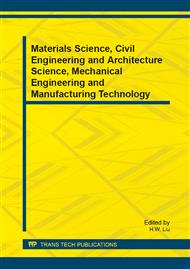p.1231
p.1235
p.1239
p.1243
p.1248
p.1252
p.1256
p.1260
p.1264
Determine the Geometry of Tip in Humidity-Dependent Adhesion Force Measurements with Atomic Force Microscope
Abstract:
The changes of the tip geometry due to the tip wear can completely alter the variation of the adhesion force dependence on the humidity. In this paper, we propose a simple method to calculate the width of tip wear using the adhesion force at inflection point of the experimental adhesion force versus humidity curves. Theoretical results show that the turning point of the adhesion versus humidity curve is closely correlated with the width of the worn tip, which can be precise calculated. The validity of the proposed method is proved by the agreement of our calculate results and the existing experimental data.
Info:
Periodical:
Pages:
1248-1251
Citation:
Online since:
January 2014
Authors:
Keywords:
Price:
Сopyright:
© 2014 Trans Tech Publications Ltd. All Rights Reserved
Share:
Citation:


